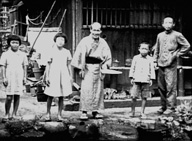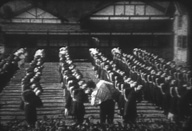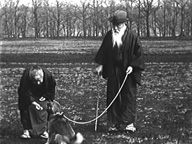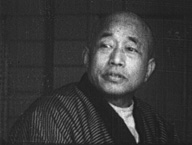| Films about Yamagata |
|---|
|
|
Part 2 A Look at Prewar Yamagata
“The other day, when I was rebuilding my house and I knocked down the storeroom, I came across some 8mm footage that my grandfather had taken, but I didn’t know what to do with it so I threw it away.” Hearing this line from an acquaintance, I fainted dead away. Upon further inquiry, he told me that other items like vases and hanging scrolls had also turned up in the same storeroom and been saved. This is definitely not a rare case. To be sure, on first glance one is inclined to think of film and the like as having no material value.
However, as opposed to things like vases and hanging scrolls, with film there is no issue of authenticity. Not only is all film “authentic,” all film also conceals within it value both cultural and historical. Moreover, among those films that are found in film cans gathering dust, there are often “phantom works,” whose negatives have gone missing.
On the occasion of this year’s festival, as part of “Films about Yamagata,” we hereby announce the “Film Frontiers of Yamagata” project, whose purpose is to call for any film that might otherwise be discarded so that these precious documents may be collected and saved, and to unearth long-lost works so that they may be handed down to succeeding generations. As a forerunner to this project, at this year’s festival, please have a look at these numerous recordings documenting “prewar Yamagata.” The “new-and-yet-old Yamagata,” in which the lingering scent of Taisho Modernism intermingles with idyllic early Showa scenery, will surely amaze you.
—Saito Kenta
 Grandfather’s Morning
Grandfather’s Morning
(“Ojiisama no asa”)- 1940 / Silent / B&W / 16mm / 3 min
Director: Soyama Seiichi
Source: Ito Keiko
A movie from 1940. My grandfather asked a director to film him so he could send the footage to his younger brother working overseas. Because I didn’t have a projector, I couldn’t watch the 16mm film, left to me by my mother, and it remained in the dresser. In the film, my great-grandfather and great-grandmother, known to me only through photos, are full of animated movement. My grandfather and grandmother are young again. The year after this was filmed, war broke out in the Pacific. The middle-school students who are laughing light-heartedly in the film will a few years later be scattered across the battlefield.
—Ito Keiko, Yamagata City
 Kaminoyama City before and after the War
Kaminoyama City before and after the War
- No date / Silent / Color, B&W / Video (Original: 9.5mm, 8mm) / 20 min
Photography: Hasegawa Kenzo
Source: Kaisendo, Hasegawa Koichi
Hasegawa Kenzo (1886–1957), manager of a yarn factory in Kaminoyama, and also known as an art lover, founded Kaisendo to preserve and display the works of art he spent half his life collecting. He was deeply interested in photography as well, starting from glass dry plates, and running the spectrum through Leica snaps, early use of 9.5mm and 8mm film and more, leaving behind a wealth of photographic records. Featuring footage of the Kaminoyama race track from around the time of World War II, the Kaminoyama ski area, scenes of bathing at Atsumi, and more, this film was taken out of the vault for the first time in about fifty years in response to this project’s original call for films.
 Ishiwara Kanji’s Footage of Manchuria
Ishiwara Kanji’s Footage of Manchuria
- Circa 1930 / Silent / B&W / Video (Original: 9.5mm) / 25 min
Photography: Ishiwara Kanji
Source: Tsuruoka Local Archives, NHK Archives
 “Securing the Peace of the Land”: An Interview with Ishiwara Kanji
“Securing the Peace of the Land”: An Interview with Ishiwara Kanji
- 1946 / Japanese / B&W / Video (Original: 16mm) / 5 min
Source: Tsuruoka Local Archives
Ishiwara Kanji (Tsuruoka City, Yamagata) is famous for being one of the main culprits in the Manchuria Incident. He was the first Japanese person to buy a Leica, and was also filming various events with a 9.5mm Pathé Baby around that time. Most of the footage in this screening is of Manchuria around 1930, just before the Incident itself. Things like the footage of Colonel Nagata Tetsuzan coming to Manchuria, and tours of battle sites such as Port Arthur are fascinating. The interview of Ishiwara is postwar footage, but it is possible that it was projected in branches of the political organization Ishiwara founded, the East Asia League.
